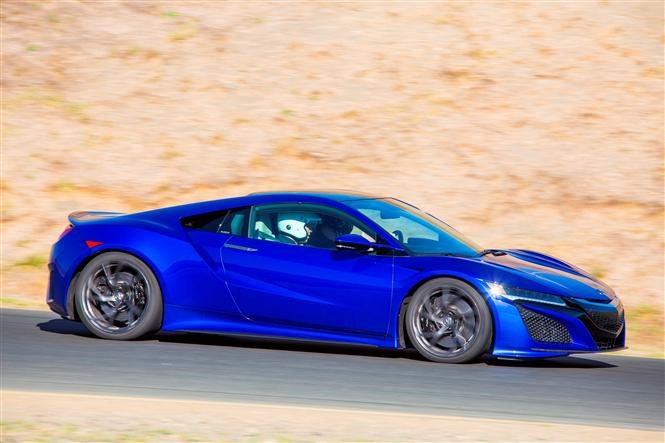Eleven years after the demise of the first generation, an all-new Honda NSX has landed and we’ve had an early drive of the company’s latest high performance flagship.
The old NSX was a seminal sports car that offered most of the performance of a top-end Ferrari but with much greater usability and practicality, meaning the newcomer has quite a legacy to live up to.
Honda’s latest NSX is a high-tech, high-speed hybrid sports car that uses electric motors to boost power for greater speed and also to improve driveability.
Its acceleration and fuss-free handling are astonishing, setting new benchmarks in this price range. That’s against talented competition such as the Porsche 911 Turbo, the new McLaren 570GT and the Audi R8.
Under the skin
The NSX is one of the world’s most technically advanced cars. Its core power comes from a new mid-mounted direct-injection V6 engine, supplemented by three electric motors.
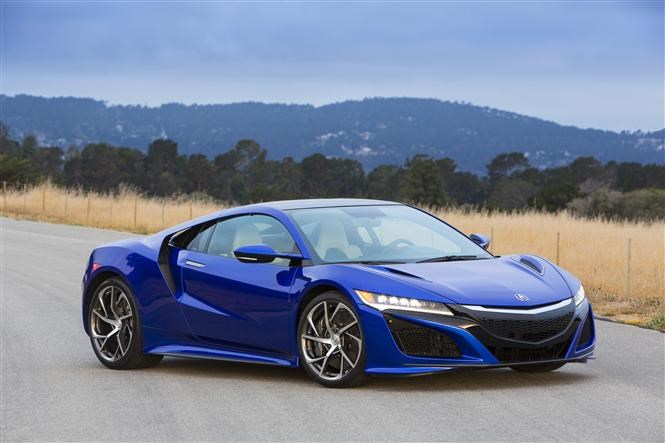
One electric motor is directly attached to the petrol engine’s flywheel to boost low-end torque, the other two drive the front wheels. The front motors can boost traction and also vector torque, improving handing by directing more grunt to the outside wheel when cornering.
Some of the technology is similar to the five-times-the-price Porsche 918 Spyder but it also has some technical similarities to the cheaper BMW i8, although the Honda is much faster.
Incredible performance
This is an astonishingly rapid car. Its standing start acceleration is almost as fast as the £1 million McLaren P1 hypercar, with a 0-62mph time of “less than 3.0 seconds”. Top speed is 191mph.
The supplementary engine-mounted electric motor gives instant punch, so there’s no throttle lag from the twin-turbo V6. Its response is sensational, yet at medium and high revs, the V6 engine also gives eye-widening performance, accompanied by a pleasing exhaust growl. A nine-speed automatic gearbox complements the engine perfectly.
All this and yet Honda claims the NSX will return 28mpg with CO2 emissions of 228g/km.
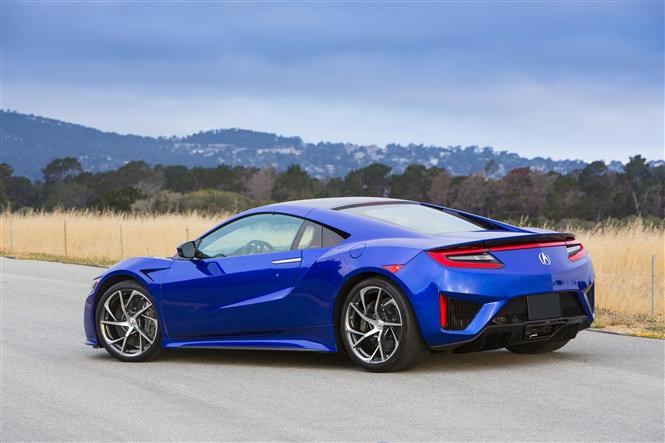
There are four driving modes – Quiet (for city and motorways), Sport (A-roads), Sport Plus (winding roads and for showing off) and Track (circuit only). Each offers a discernibly different character.
Quiet not only gives a muted engine note but also serves up a surprisingly compliant ride. On the other hand, Sport Plus and Track give real supercar feel.
Electric motors help handling
The NSX’s two front-mounted electric motors vary torque to their respective front wheels. They help make steering turn-in sharper and cornering smoother and more fluent. Cornering feels “on rails”, and on the circuit it’s an incredibly easy car to drive fast.
Additionally, the pair of front-mounted electric motors offer four-wheel drive traction when needed. This helps standing start acceleration and also boosts performance in slippery conditions.
The steering is very precise but ultimately lacks the feel and liveliness of a Porsche 911 or a McLaren 570GT.
Cabin is a bit too ordinary
For a car costing almost £140,000 – and it’s easy to break through that barrier with a few tasty options – the NSX’s cabin feels rather ordinary, a criticism also levelled at the original over 25 years ago.
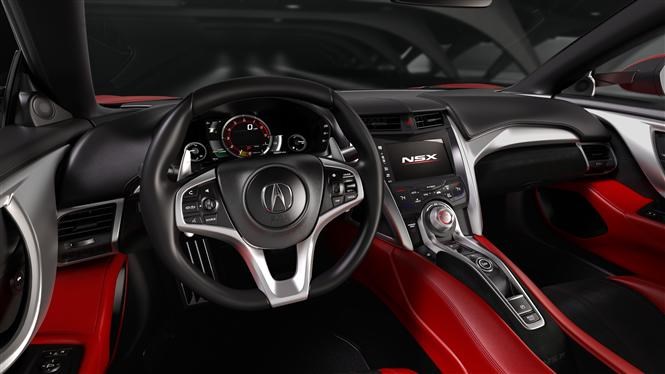
Switchgear, controls and graphics are all Civic- or CR-V-familiar and, disappointingly, the gearchange paddles are plastic.
For a car that is also promoted on its day-to-day usability, it also has very little cabin storage space – no door pockets, central cubby or even cupholders.
The everyday supercar
Like the old NSX, a key quality of the new NSX is its ability to offer Ferrari-size thrills and yet be as docile and as easy to drive everyday as a Jazz.
Visibility is excellent, and much better than most sports cars. The petrol-electric hybrid engine is very tractable and easy to drive in town, yet provides instant power, while the gearbox operates smoothly as a full automatic, although you can change gear using the paddles if you’d prefer. Controls are light and easy to use.
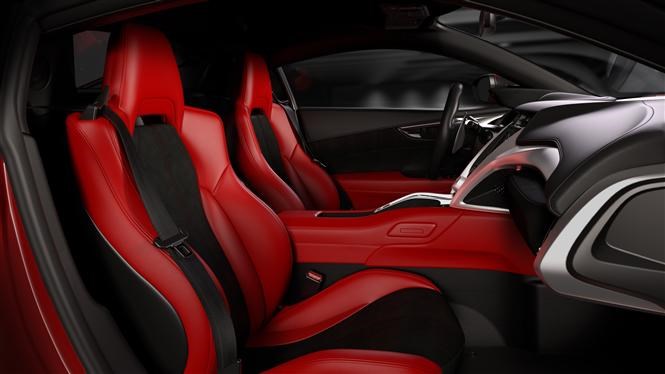
Ride quality is good, and the seats are comfortable. So it can be used every day as a fuss-free form of (high speed) transport.
The boot is a problem. It’s sited right over the exhaust, so any objects placed there soon get very hot.
In the autumn we’ll be exploring the Honda NSX in more depth with a full and detailed review. Find out then whether the new Honda supercar’s good enough to wear the fabled NSX nameplate.



